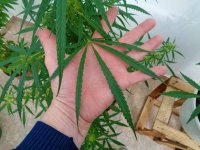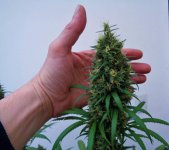Hi Beta,
I don't believe your comments are correct...nor your definition of Landrace. What you're suggesting is that the only true landraces are essentially ditch weed untouched by human hands.
I think you might be right. It was my understanding that landrace definitionally meant untouched by human hands but it seems there's more to it than that:
https://en.wikipedia.org/wiki/Landrace#Plants




